Showing 1–20 of 34 resultsSorted by latest
-
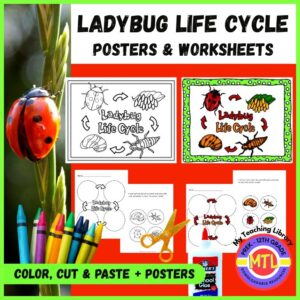 $2.50Buy Now
$2.50Buy NowA great resource to display and to get students hands-on putting together their own life cycle of the ladybug!
⭐Benefits of this resource:
- -Low prep – print and use/
- -Children learn about the ladybug life cycle both visually (poster) and in a fun and hands-on way as they color, cut and glue (worksheets).
- -Can be used to introduce the life cycle, or as a review/assessment to check understanding.
- -Encourages fine motor/scissor skills and sequencing.
- -Differentiated can be achieved by deciding if students are allowed to have the poster as a reference when completing their own life cycle.
- -Finished worksheets can be inserted into an interactive notebook.
⭐What else is included?
- -2 Life cycle posters (Color and Black/White) You can always allow students to color the b/w poster and keep.
- -2 student pages (worksheets). Students will color and cut out the 4 stages of the ladybug life cycle from the first page and glue in the correct sequence on the second page.
-
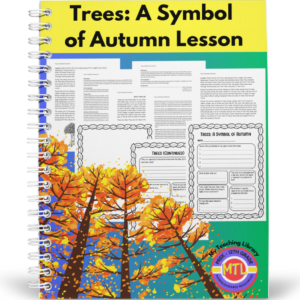 $2.50Buy Now
$2.50Buy NowA multi-age lesson to teach students (1st – 5th grades) about trees! The lesson is designed as a Fall (Autumn) outdoor/indoor activity lesson as the leaves are changing colors but can be easily converted to an indoor activity only. If using as an indoor only activity, be sure to have photos of trees to incorporate into the lesson.
Students will learn about:-
What trees provide
-
Aspects of a ‘living’ tree (how they get water, nutrients and breathe)
-
Parts (and their function) of a tree: roots, trunk, bark, branches, leaves
-
How leaves make food
-
Types of trees: deciduous and evergreen
Includes:
– Teacher lesson notes (guide)
– Student informational text
– Student activity worksheet pages
– Answer keys -
-
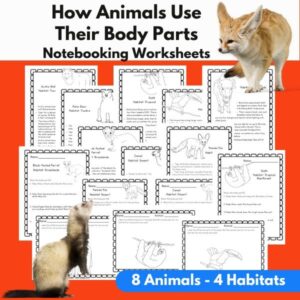 $3.00Buy Now
$3.00Buy NowIn this unit study, students will learn how 8 different animals (4 different habitats) use many of their body parts to live and survive. For each animal, students will be given a fact sheet, a short answer worksheet and a worksheet on which they will label and describe the specific body parts and how they are used.
Animals covered in this unit are:
– Desert Habitat: Camel, Fennec Fox
– Grasslands: Black-footed Ferret, Bison
– Tropical Rainforest: Sloth, Toucan
– Tundra: Polar Bear, Arctic Wolf -
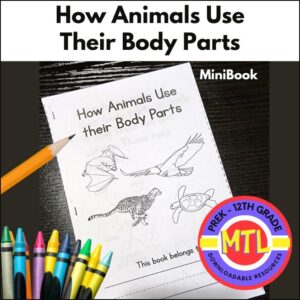 $2.50Buy Now
$2.50Buy NowA fun to create, Science mini-book teaching students how different animals use their body parts as tools to live and survive! Once students finish creating this 10 page mini-book, they will be able to give examples of how 7 animals use their body parts to get nourished, move within its environment and even stay protected from predators!
Animals included in this project are the cheetah, bat, loggerhead turtle, badger, kangaroo, deer and tundra swan. There is also a image of a wolf with showing various body parts often used to accomplish an animal’s survival.
Students will color, draw and write to complete the book.
-
 $2.25Buy Now
$2.25Buy NowHere is a set of 36 science classification cards to give students the ability to classify living and nonliving things! These cards include beautiful color photos of 36 different items plus two sets of classification mats.
-
 $2.25Buy Now
$2.25Buy NowThis living vs. nonliving booklet is perfect for kindergarten and 1st grade students just learning the science concept. It includes a cover page and 5 inside pages that will teach students that living things grow, need food and water as well as reproduce.
-
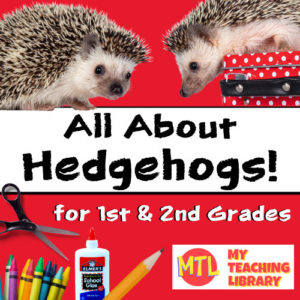 $4.00Buy Now
$4.00Buy NowStudents will learn all about hedgehogs, their life, habitats, life cycle and more with these activities and worksheets!
They will learn about where they live (habitats) their life cycle, that they are mammals, omnivores, nocturnal and about hibernation! This unit includes informational text with questions, tracing and copy work, creative and expository writing, plus activities including mini-book creation, ‘cut and glue’, drawing and more. All designed for the 1st and 2nd grader in mind to help build vital language arts skills as well as geography and science knowledge.
-
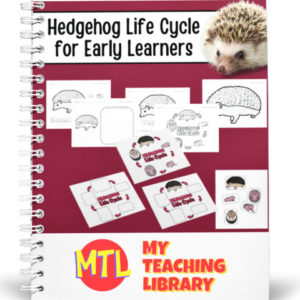 $2.50Buy Now
$2.50Buy NowThis hedgehog resource has been designed to help early learners (PreK – Kindergarten) to learn about the life cycle of a hedgehog! It includes a life cycle poster, a hands-on activity that can be used with students at different levels and several worksheets. These worksheets will have students coloring, tracing words and drawing!
-
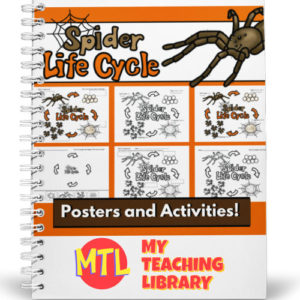 $2.00Buy Now
$2.00Buy NowWant to study the life cycle of a spider? Here is a resource for you!
Includes:
– 2 labeled posters (color and b/w)
– life cycle coloring page
– colorful center activity
– 2 cut-n-paste worksheetsUse as a standalone resource or combine with:
-
 $1.75Buy Now
$1.75Buy NowThis Science resource will teach students the Life Cycle of a Butterfly and includes:
- * 2 color posters of the life cycle (1 with added details)
- * 1 b/w poster (for students to color),
- * 4 picture/information cards for each stage of the life cycle
- * 3 life cycle worksheets
-
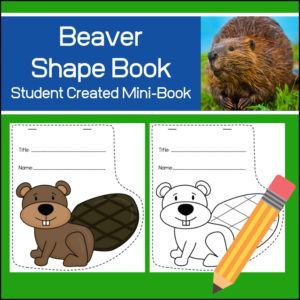 $2.00Buy Now
$2.00Buy NowStudying Beavers? Students will love to self-publish their own work in this cute Beaver shape book! Not only can they write creative stories or poems, but you can also have them use these templates to convey what they’ve learned (comprehension) from a book or from their own research! Template size: 7.5″ tall x 7″ wide.
Includes:
- 6 possible covers
- 13 different inside pages
I’ve created pages with both dotted-dashed lines as well as single lines so that you can use what best fits the level of your students.
-
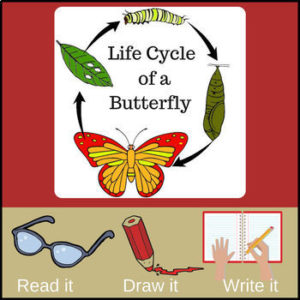 $2.00Buy Now
$2.00Buy NowThis Science – Language Arts resource with have students creating their very own mini-book of the life cycle of a butterfly!
Knowledge students will learn: The book will begin with the butterfly laying an egg on a leaf and continue as a caterpillar begins to grow in the egg, hatches and begins to eat. Students will learn what the caterpillar eats and that it is a type of larva. As the book progresses, students will write about the caterpillar building a cocoon and it’s life as a pupa (and a chrysalis) before emerging as a beautiful butterfly!
On each page, students will … read the text, draw a picture and then write (copy) the written text.
-
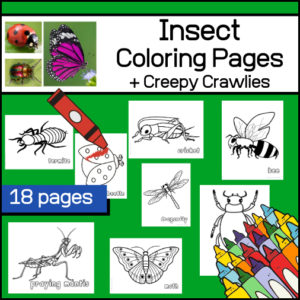 $2.50Buy Now
$2.50Buy NowThis resource is a print and go resource offering 18 coloring pages of insects plus a couple creepy crawlies! Each page has a large picture to color and the name of the ‘bug’ in font that are also ready to color.
-
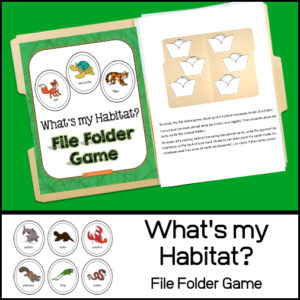 $4.00Buy Now
$4.00Buy NowStudents love learning through interactive, hands-on games! This Science resource will help your students learn to identify and classify animals based on the habitat in which they live! Includes 8 habitats and 72 animal cards.
-
 $1.50Buy Now
$1.50Buy NowSeals are found along most coasts and cold waters, but a majority of them live in the Arctic and Antarctic waters. Harbor, ringed, ribbon, spotted and bearded seals, as well as northern fur seals and Steller sea lions live in the Arctic region. Whether you are studying these wonderful animals or just want to add a quick side lesson, here is a Seal Shape Book that students can use to self-publish their created stories, reports and poems! Templates have differing line heights to accommodate a variety of grade levels.
-
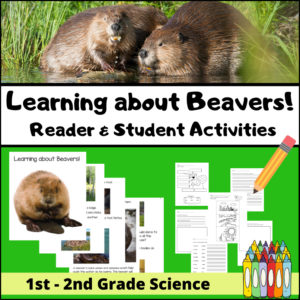 $3.00Buy Now
$3.00Buy NowThis 1st – 2nd Grade cross-curricular resource (Science, Language Arts, Art) is all about beavers and includes a READER and corresponding STUDENT ACTIVITIES! Students will learn about the beaver’s habitat, diet and how their own bodies help them survive! The reader is provided in both color and b/w.
-
 $5.00Buy Now
$5.00Buy NowA fun, interactive nature scavenger hunt that can be used by an individual student, a classroom or family.
⭐ Take this resource and go outside and explore! See how many things that can be found that begin with each letter of the alphabet. You can choose to do one letter at a time, several letters or the entire 26-letters. The choice is up to you!
As items are ‘discovered’ on your outdoors adventure, there is plenty of room for students to draw pictures of those items. Some letters, like the letter “Z”, may be trickier than others. This is when YOU can change it up a bit and tell students they can find things shaped like the letter “Z”. How fun!
Use at a park, a zoo, a botanical garden, on a riverwalk, at a pond or even in a backyard!
⭐This resource is designed to get students excited about exploring and recording what they find.
-
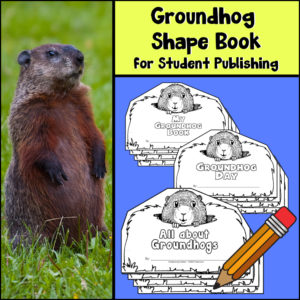 $3.00Buy NowStudents will love creating their own book about Groundhogs also known as the woodchuck. Use for Groundhog Day or anytime. This resource is sure to spark creativity! Add this to your lesson plans around Groundhog Day (in February), alongside a Science lesson on burrowing animals or anytime! This resource will have students engaged in writing and publishing.
$3.00Buy NowStudents will love creating their own book about Groundhogs also known as the woodchuck. Use for Groundhog Day or anytime. This resource is sure to spark creativity! Add this to your lesson plans around Groundhog Day (in February), alongside a Science lesson on burrowing animals or anytime! This resource will have students engaged in writing and publishing. -
 $1.50Buy Now
$1.50Buy NowStudying penguins or perhaps animals of the arctic? This cute shape book is ready for students to use to publish there own stories, reports or poems about penguins!
In this specific resource, single lined pages are used.
-
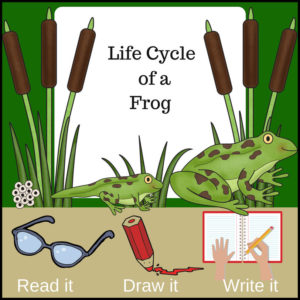 $2.00Buy Now
$2.00Buy NowThis cross-curricular (Science / Literacy – Writing ) product will have students creating their very own mini-books detailing the life cycle of a frog!
Knowledge students will learn:
The book will begin with the female frog laying her eggs near or in water. Students will then learn about the tadpole, what it looks like and what it eats and how it grows and turns into a froglet. They will learn how the froglet has developed the ability to breathe and live on land and then turns into a frog. Does a frog eat different things than a tadpole? Students will find out! At the end of the unit, there is also a coloring page of the different stages from egg to frog.
Students will: — read the text — draw a picture — write (copy) the written text

